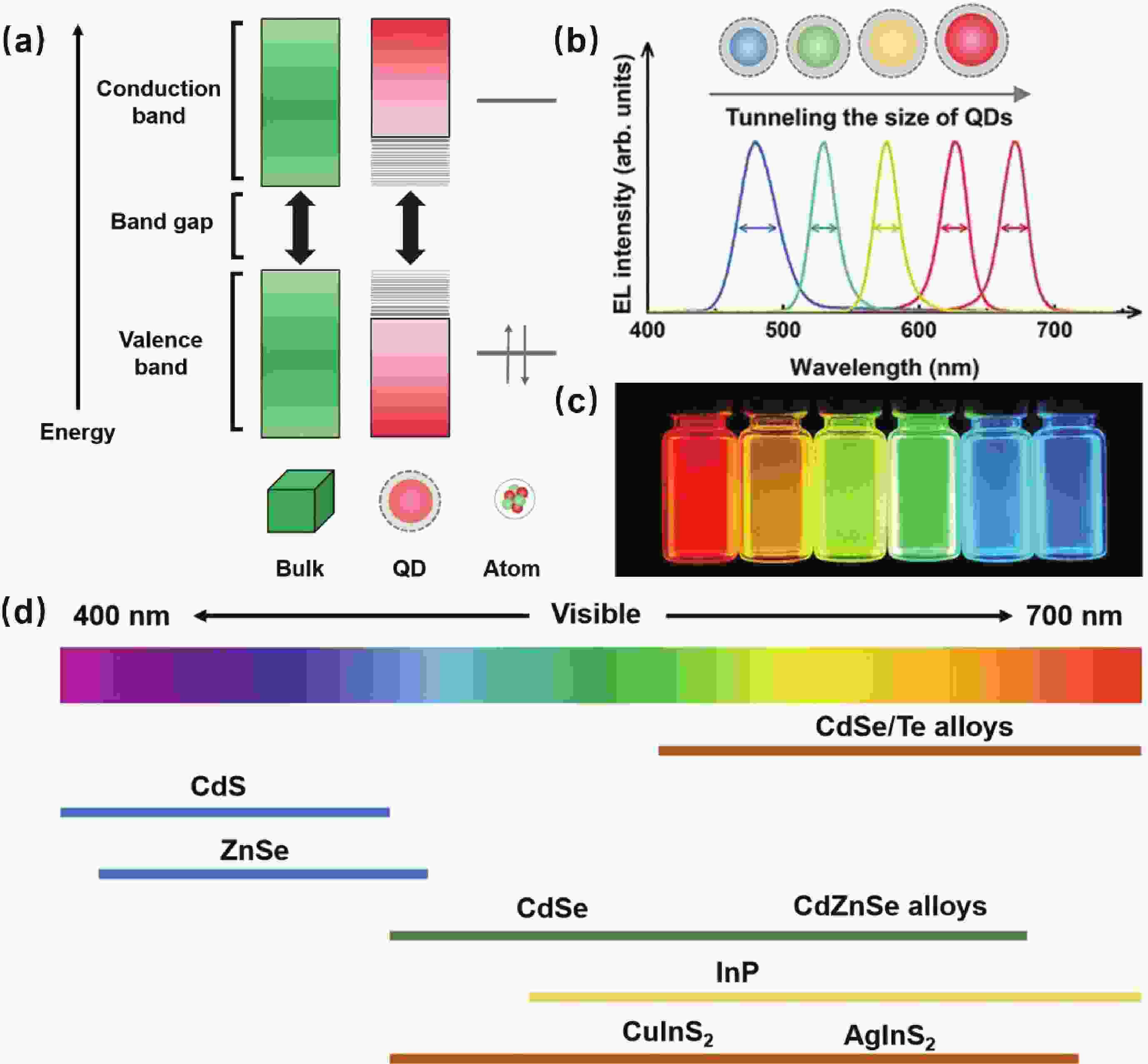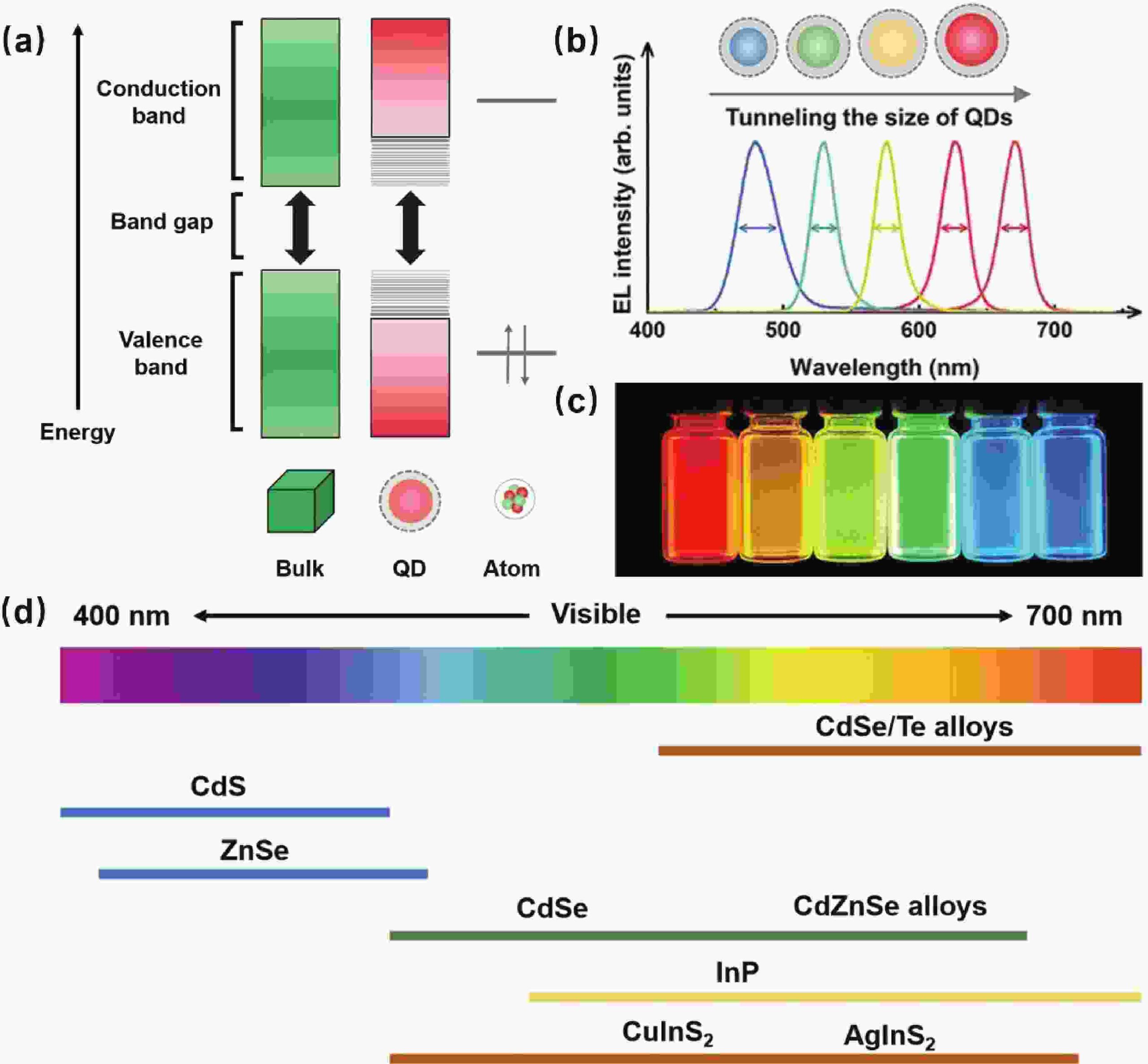
# Advancing Colour Purity in Blue Quantum Dots Free of Heavy Metals
A significant advancement in quantum dot technology has resulted in the creation of QLEDs that emit pure blue light without the need for hazardous heavy metals. Researchers from China have improved the clarity and stability of zinc–selenium–tellurium (ZnSeTe) quantum dots by adding sulfur to their nanocrystal framework. This straightforward yet efficient adjustment has led to the development of cadmium-free blue QLEDs that perform on par with leading alternatives.
## Understanding Quantum Dots
“Quantum dots are semiconductor nanocrystals exhibiting optical and electronic properties that depend on their size,” notes Yajie Dong, an optoelectronics expert at the University of Central Florida who is not affiliated with this research. Due to their diminutive size, quantum effects largely dictate their behavior, enabling precise control over their emission wavelengths—and thus their colors. This quality makes them essential for display technologies and various optical applications.
However, standard quantum dots frequently include harmful heavy metals like cadmium, lead, and indium, which pose environmental and health risks. In reaction, researchers have turned their attention to alternative substances, including ZnSeTe quantum dots. Although this cadmium-free option shows promise, it has historically suffered from broader emission linewidths, reduced efficiency, and inferior stability—elements that hinder color purity and practical commercial use.
## The Impact of Sulfur on Crystal Enhancement
A research group led by Xuyong Yang at Shanghai University has successfully addressed these difficulties by integrating a sulfur reagent during the creation of ZnSeTe quantum dots. The main problem with conventional ZnSeTe quantum dots lies in compositional inconsistencies: the highly reactive tellurium often forms clumps within the nanocrystal, resulting in structural irregularities and electron trapping. These flaws diminish the efficiency and stability of the quantum dot.
To alleviate these issues, Yang’s team utilized a sulfur-triphenylphosphite reagent during the nanocrystal synthesis. X-ray evaluations revealed that the electronegative sulfur assisted in preventing tellurium clumping, leading to a more uniform and defect-free architecture. Spectral assessments showed that this improved configuration substantially narrowed the emission linewidth, enhancing the overall color purity of the quantum dots.
## Enhancements in Blue QLEDs
Equipped with a more stable and consistent nanocrystal structure, the researchers evaluated the new ZnSeTeS quantum dots in a rudimentary LED setup. The findings were impressive:
– The refined structure yielded a brilliant pure-blue emission.
– The external quantum efficiency (EQE)—a metric indicating the efficacy of the device in converting input energy to light—rose to 24.7%, more than doubling the efficiency of the traditional ZnSeTe quantum dots.
– The new quantum dots achieved an unprecedented narrow emission linewidth of merely 17 nm at 460 nm, assuring excellent color purity—a vital aspect for display technologies.
“These ZnSeTeS QLEDs reach performance levels that rival the top cadmium-based blue QLEDs,” remarks Dong, highlighting the importance of these advancements.
## Future Challenges and Opportunities
Despite this progress, further efforts are necessary before these quantum dots can be widely adopted in commercial products. A crucial consideration for market viability is the device’s operational stability and lifespan. While the ZnSeTeS QLEDs demonstrated a promising half-lifetime of 30,000 hours, commercial products must retain at least 95% of their luminance and performance beyond this timeframe—a notable challenge that still needs to be resolved.
Nonetheless, Dong is hopeful about the prospects for cadmium-free blue QLEDs. “These blue quantum dots could transform display technology, either by enhancing existing red and green QLEDs or by replacing blue organic LEDs in hybrid displays,” he proposes. Furthermore, they may also find uses in medical lighting systems where precise spectral control is beneficial, and long-term durability is less of a concern.
## A Move Toward Safer, High-Performance QLEDs
The development of sulfur-enhanced ZnSeTe quantum dots marks a significant advancement in the pursuit of environmentally sustainable, high-performance display materials. By tackling long-standing challenges of efficiency and stability in heavy metal-free QLEDs, this study lays the groundwork for safer, more sustainable electronics without sacrificing color purity or intensity. With continued refinement, these novel quantum dots could soon play a crucial role in the next wave of display technology.
